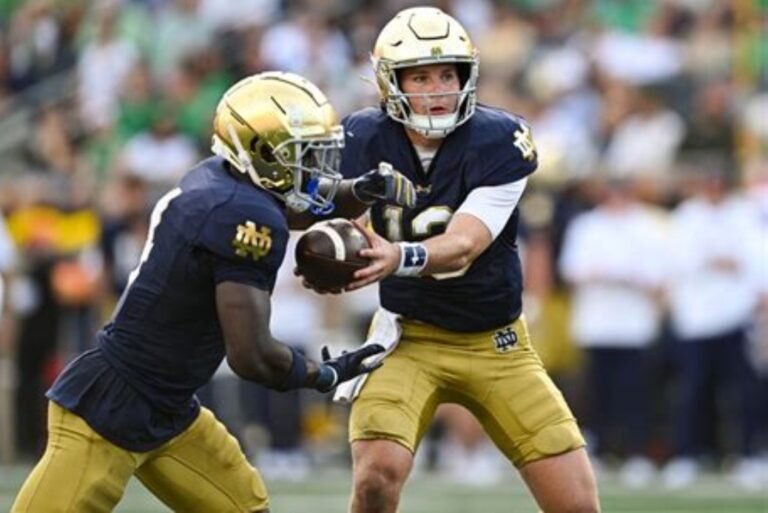In a recent development within college football’s financial landscape, Notre Dame’s independent status has resulted in a significant financial advantage over conference-affiliated teams, including the College Football Playoff (CFP) champions, Ohio State.
This outcome highlights the unique financial dynamics at play in collegiate athletics.
Notre Dame’s Financial Windfall
Notre Dame, renowned for its longstanding independence from any athletic conference, secured a substantial payout of $20 million following their journey to the national championship game. This sum is derived from various performance-based bonuses:
Qualifying for the CFP: $4 million Advancing to the Quarterfinals: $4 million Reaching the Semifinals: $6 million Competing in the National Championship Game: $6 million
As an independent program, Notre Dame retains the entirety of these earnings, a privilege not extended to teams affiliated with conferences.
Ohio State’s Shared Earnings
In contrast, Ohio State, a member of the Big Ten Conference, operates under a revenue-sharing model. Despite clinching the national championship with a 34-23 victory over Notre Dame, the Buckeyes’ financial reward is comparatively modest. The Big Ten’s revenue-sharing structure mandates that CFP earnings are pooled and distributed among all member institutions. Consequently, Ohio State’s direct financial gain from their championship run is approximately $2 to $2.5 million.
The Historical Context of Notre Dame’s Independence
Notre Dame’s choice to remain independent is deeply rooted in its history. A pivotal moment occurred in the 1990s when the university secured a lucrative broadcast deal with NBC, granting exclusive rights to televise Notre Dame’s home football games. This agreement not only provided significant financial benefits but also reinforced the university’s commitment to independence, allowing for greater control over scheduling and media rights.
Financial Implications of Independence vs. Conference Affiliation
The financial outcomes for Notre Dame and Ohio State underscore the contrasting economic models in college football:
Independent Programs: Notre Dame’s autonomy enables it to retain all postseason earnings. However, this model carries inherent risks, as the university must consistently perform at a high level to secure substantial payouts. Without the safety net of shared conference revenues, a less successful season could result in significantly reduced income.
Conference-Affiliated Programs: Teams like Ohio State benefit from the financial stability provided by conference revenue-sharing agreements. This model ensures a consistent income stream, regardless of individual team performance in a given season. While this approach promotes financial equity among member institutions, it can lead to scenarios where a championship-winning team receives a smaller direct payout than an independent counterpart.
Debate Over Fairness
The disparity in financial rewards has sparked discussions about the fairness of the current system. Critics argue that Notre Dame’s ability to retain all postseason earnings provides an undue advantage over conference-affiliated teams, which must share their revenues. Supporters of Notre Dame’s model contend that the university assumes greater financial risk by remaining independent and should thus reap the full benefits of its successes.
Looking Ahead
As the landscape of college football continues to evolve, the financial strategies of programs like Notre Dame and Ohio State will remain subjects of interest and debate. The balance between independence and conference affiliation presents a complex decision matrix, with significant implications for revenue generation, competitive scheduling, and institutional autonomy.
In conclusion, Notre Dame’s independent status has afforded it a notable financial advantage in the context of the College Football Playoff system. This situation highlights the broader economic considerations that universities must navigate in the realm of collegiate athletics.



